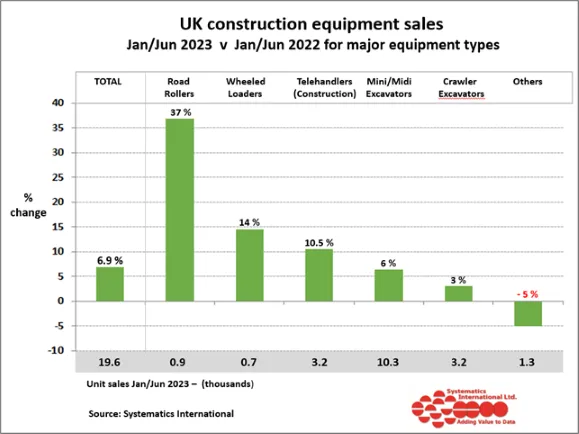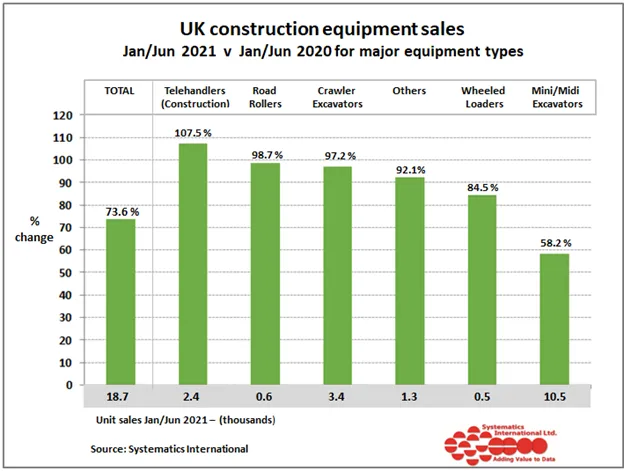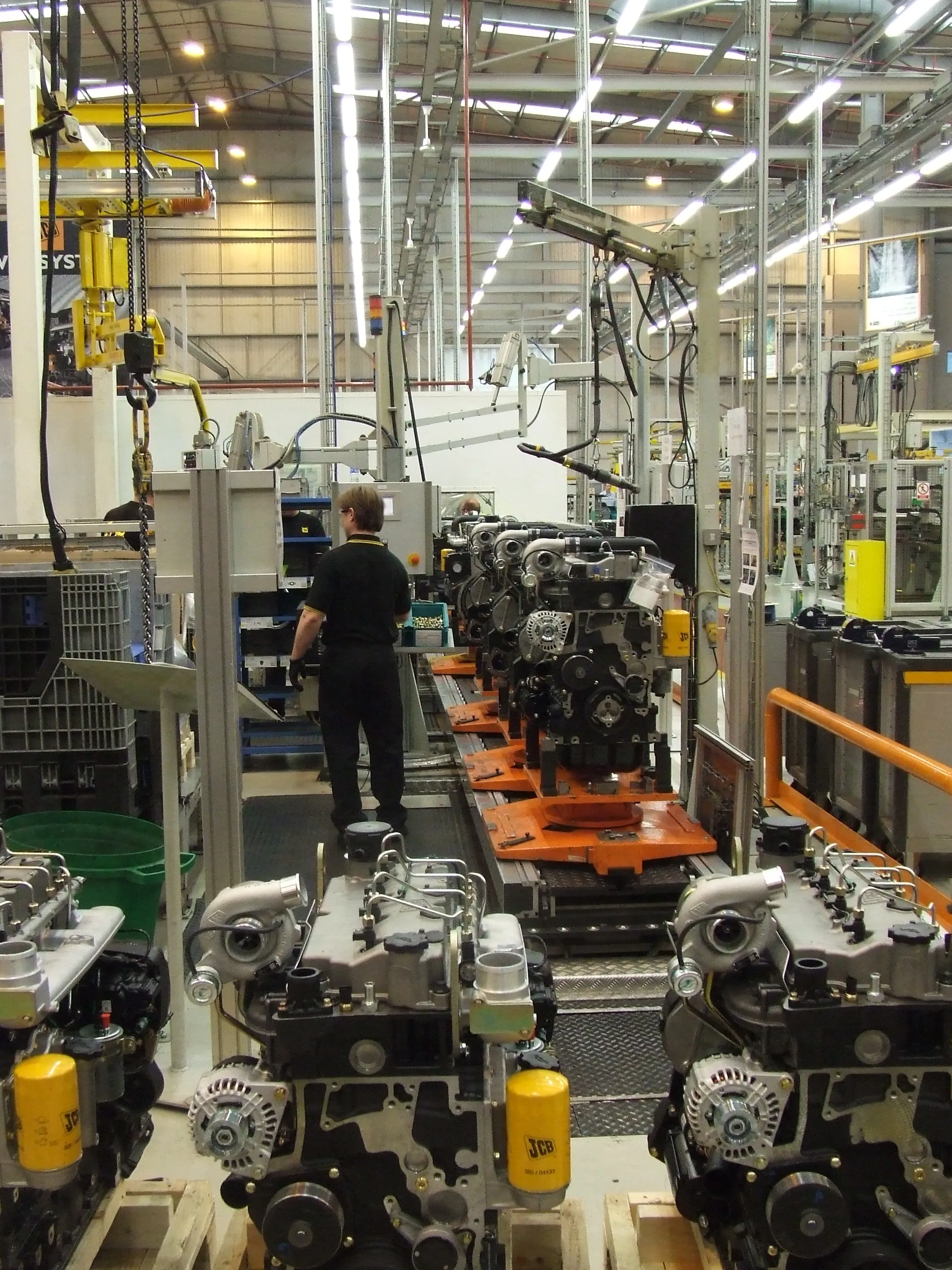The latest figures from the UK’s Construction Equipment Association (CEA) show that exports of machines continued to show modest growth in Q2 2016. This continued to reverse the declining trend seen in 2015, which reflected poor demand in many major overseas markets according to the CEA. Measured in volume terms (tonnes), exports showed 6.1% growth in Apr/Jun compared with Jan/Mar 2016. However, compared with the same quarter in 2015, Apr/Jun was still 10.3% below last year’s level. For the first half year,
August 23, 2016
Read time: 4 mins
The latest figures from the UK’s 3418 Construction Equipment Association (CEA) show that exports of machines continued to show modest growth in Q2 2016. This continued to reverse the declining trend seen in 2015, which reflected poor demand in many major overseas markets according to the CEA. Measured in volume terms (tonnes), exports showed 6.1% growth in Apr/Jun compared with Jan/Mar 2016. However, compared with the same quarter in 2015, Apr/Jun was still 10.3% below last year’s level. For the first half year, export volumes in 2016 were 7% below 2015 levels.
UK imports of construction and earthmoving equipment showed further increases in Q2 2016. Measured in volume terms (tonnes), imports showed a 10.5% increase in Apr/Jun compared with Jan/Mar, at 74,000tonnes. However, in the first half of 2016 import levels are still 11% below 2015 levels.
Measured in volume terms, the UK remains a net exporter of construction and earthmoving equipment, with the surplus remaining relatively stable in the last 18 months within a range from 62,000-70,000tonnes/quarter. In Apr/Jun 2016 the surplus was 62 k tonnes, very similar to Jan/Mar. The trade surplus has narrowed since 2013, when it was over 100,000tonnes, as a quarterly average level.
Overall, the quarterly pattern of exports and imports in value terms is similar to the volume movements, as shown in the graph below. However, growth in Exports in 2016 has been very modest, compared with double digit increases in imports as indicated in the graph below. This is resulting in a narrowing trade surplus for exports quarter on quarter, with Apr/Jun 2016 at £244 million, compared with an average of over £300 million/quarter in 2015, and over £500 million in 2013.
In the first half of 2016, UK equipment manufacturers exported machines to over 160 different countries. The Top 20 countries accounted for between 75-80% of total exports in both volume and value terms, based on Jan/Jun 2016
The top 3 destinations in the first half of 2016 accounted for over 40% of total exports in volume terms, consisting of the USA (22%), Irish Republic (10%) and Germany (9%). The quarterly pattern of exports in 2015 and 2016 shows that sales to the USA have fallen back from levels seen in the first half of 2015, while exports to the Irish Republic and Germany continue to show growth in 2016. This is consistent with the overall pattern of UK exports of equipment, which show that the proportion of exports to other EU markets continues to increase from 34% in 2013, to 40% in 2015, and up to 47% in the first half of 2016, on a volume (tonnes) basis. A similar pattern exists for £ value of exports, with the EU accounting for 27% in 2013, increasing to 40% in the first half of 2016.
This trend looks likely to continue in the short term based on the latest update from CECE (2440 Committee for European Construction Equipment) on the construction equipment market. This suggests growing demand in Europe and India in 2016, and some stabilisation in Russia and Turkey. However, other major markets are still showing weakness, including North and South America, China, Africa and the Middle East.
The table below shows a ranking of exports amongst the Top 20 countries based on the average value per tonne of equipment. This shows Japan as being the highest value destination at close to £7,000/tonne compared with an average of £4,500 across all exports. In second place is the highest volume and value market, the USA at £5,800/tonne. Other countries also showing a high value mix of equipment sales are Australia, France and Italy, with average values over £5,000/tonne.
In the first half of 2016, UK imports of construction and earthmoving equipment arrived from over 60 different countries. In the first half of 2016, the Top 20 countries accounted for between 97-98% of total imports in both volume and value terms.
The top two importing countries in 2016 were Japan and Germany, similar to 2015. Between them, they accounted for 31% of total volume, and 34% of total value in Jan/Jun 2016. Both countries showed increased levels in Apr/Jun compared with Jan/Mar.
Belgium and the Netherlands remain as 2 of the highest importing countries in 2016 (ranked 3rd and 7th), accounting for c.15 to 20% of total imports between them. However, these markets are recognised as often being a “last” country of shipment into the UK, rather than the source destination of the equipment.
UK imports of construction and earthmoving equipment showed further increases in Q2 2016. Measured in volume terms (tonnes), imports showed a 10.5% increase in Apr/Jun compared with Jan/Mar, at 74,000tonnes. However, in the first half of 2016 import levels are still 11% below 2015 levels.
Measured in volume terms, the UK remains a net exporter of construction and earthmoving equipment, with the surplus remaining relatively stable in the last 18 months within a range from 62,000-70,000tonnes/quarter. In Apr/Jun 2016 the surplus was 62 k tonnes, very similar to Jan/Mar. The trade surplus has narrowed since 2013, when it was over 100,000tonnes, as a quarterly average level.
Overall, the quarterly pattern of exports and imports in value terms is similar to the volume movements, as shown in the graph below. However, growth in Exports in 2016 has been very modest, compared with double digit increases in imports as indicated in the graph below. This is resulting in a narrowing trade surplus for exports quarter on quarter, with Apr/Jun 2016 at £244 million, compared with an average of over £300 million/quarter in 2015, and over £500 million in 2013.
In the first half of 2016, UK equipment manufacturers exported machines to over 160 different countries. The Top 20 countries accounted for between 75-80% of total exports in both volume and value terms, based on Jan/Jun 2016
The top 3 destinations in the first half of 2016 accounted for over 40% of total exports in volume terms, consisting of the USA (22%), Irish Republic (10%) and Germany (9%). The quarterly pattern of exports in 2015 and 2016 shows that sales to the USA have fallen back from levels seen in the first half of 2015, while exports to the Irish Republic and Germany continue to show growth in 2016. This is consistent with the overall pattern of UK exports of equipment, which show that the proportion of exports to other EU markets continues to increase from 34% in 2013, to 40% in 2015, and up to 47% in the first half of 2016, on a volume (tonnes) basis. A similar pattern exists for £ value of exports, with the EU accounting for 27% in 2013, increasing to 40% in the first half of 2016.
This trend looks likely to continue in the short term based on the latest update from CECE (
The table below shows a ranking of exports amongst the Top 20 countries based on the average value per tonne of equipment. This shows Japan as being the highest value destination at close to £7,000/tonne compared with an average of £4,500 across all exports. In second place is the highest volume and value market, the USA at £5,800/tonne. Other countries also showing a high value mix of equipment sales are Australia, France and Italy, with average values over £5,000/tonne.
In the first half of 2016, UK imports of construction and earthmoving equipment arrived from over 60 different countries. In the first half of 2016, the Top 20 countries accounted for between 97-98% of total imports in both volume and value terms.
The top two importing countries in 2016 were Japan and Germany, similar to 2015. Between them, they accounted for 31% of total volume, and 34% of total value in Jan/Jun 2016. Both countries showed increased levels in Apr/Jun compared with Jan/Mar.
Belgium and the Netherlands remain as 2 of the highest importing countries in 2016 (ranked 3rd and 7th), accounting for c.15 to 20% of total imports between them. However, these markets are recognised as often being a “last” country of shipment into the UK, rather than the source destination of the equipment.








